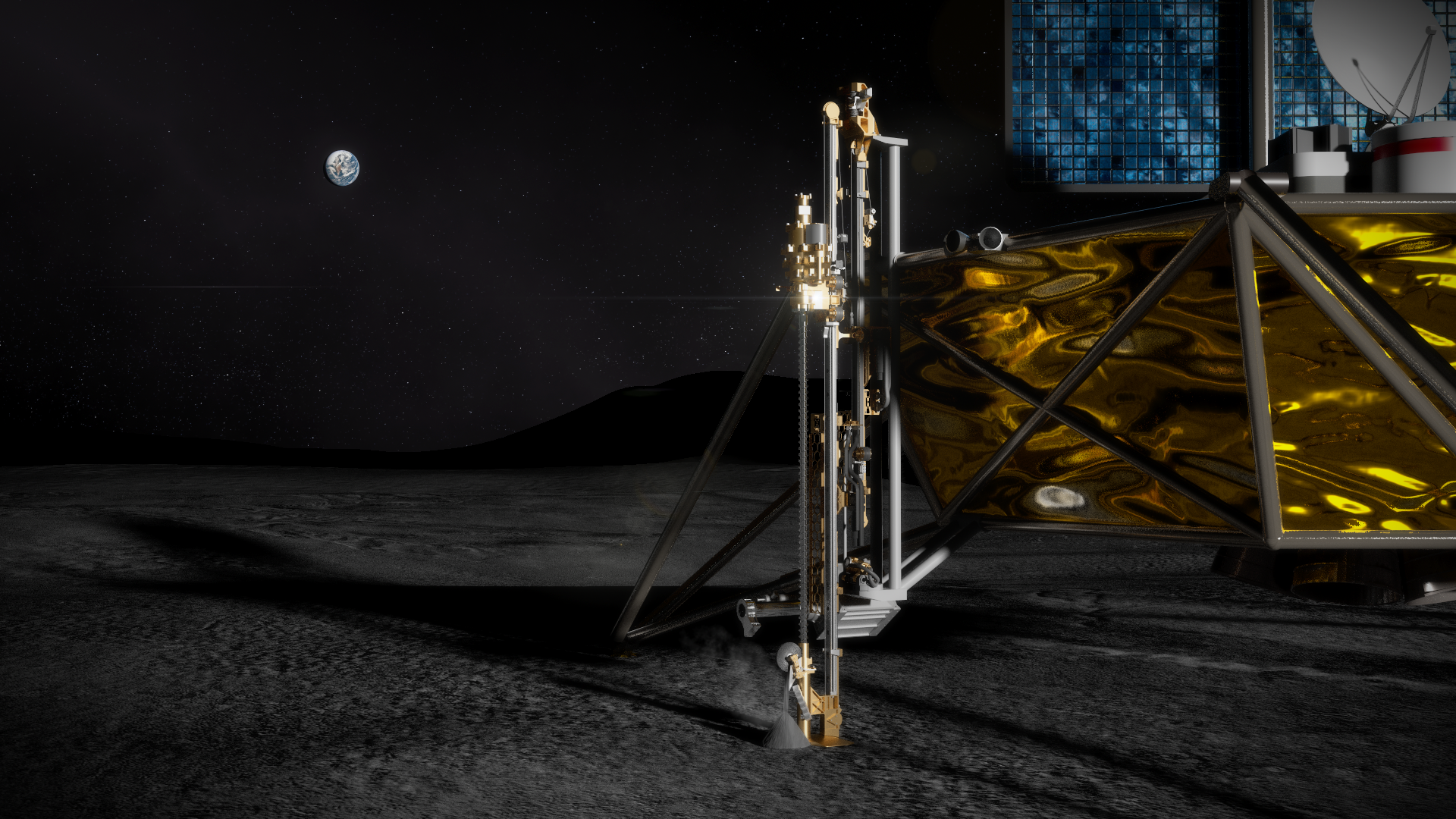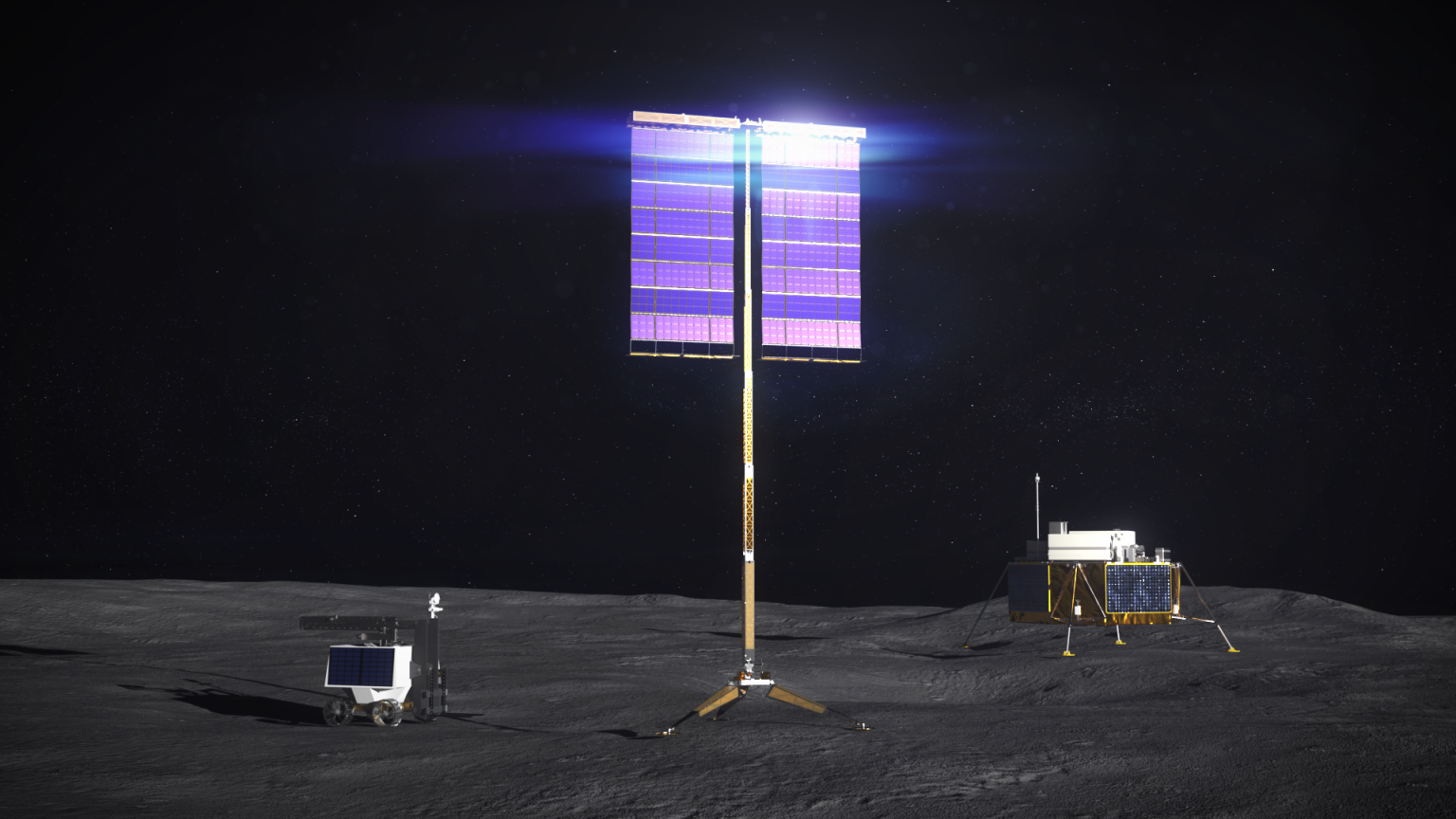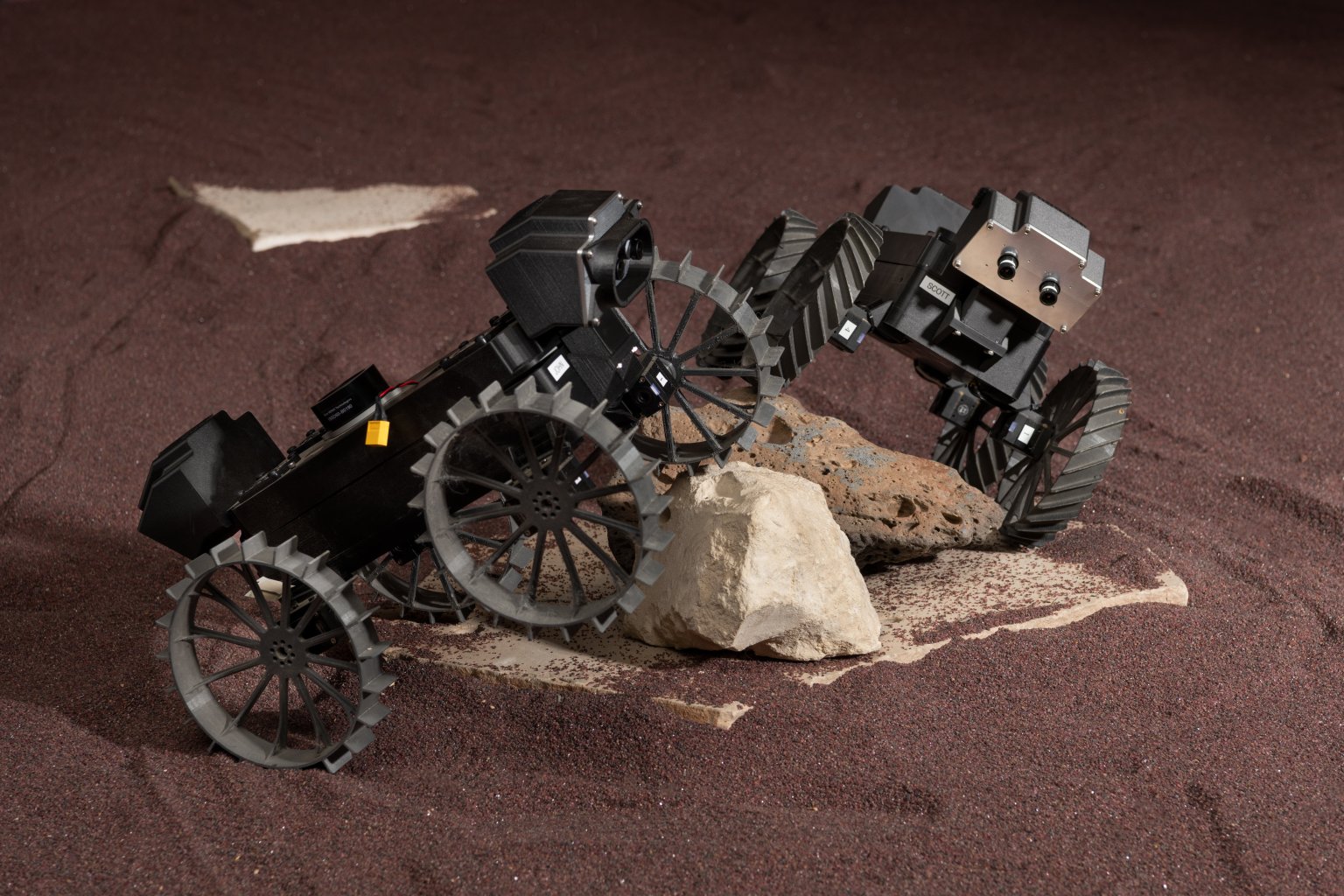
As NASA ushers in an exciting era of long-term exploration on the Moon with Artemis, new strategies are being formulated to determine how technology, infrastructure, and operations will function together as a cohesive and cross-cutting system.
As a sustained presence grows at the Moon, opportunities to harvest lunar resources could lead to safer, more efficient operations with less dependence on Earth. Many new technologies in six priority areas encompassed by NASA’s Lunar Surface Innovation Initiative will need testing. For example, advancing In-situ Resource Utilization (ISRU) technologies could lead to future production of fuel, water, or oxygen from local materials, expanding exploration capabilities.
To support ISRU technology maturation, NASA issued a Request for Information (RFI) on Nov. 6 to formulate its future Lunar Infrastructure Foundational Technologies (LIFT-1) demonstration. Led by the Space Technology Mission Directorate (STMD), NASA’s primary objective for LIFT-1 is to demonstrate ISRU technologies to extract oxygen from lunar soil, to inform eventual production, capture, and storage. Additional LIFT-1 objectives may include demonstrating new landing technologies, surface operations, and scalable power generation in the Moon’s South Pole region.
With the RFI, NASA is asking for input from the lunar community to inform an integrated approach inclusive of launch, landing, and demonstration of surface infrastructure technologies as part of a subscale ISRU demonstration.
“The LIFT-1 demonstration creates a viable path to launch, land, and conduct operations on the lunar surface. This is the infusion path we need for ongoing industry and NASA center-led technology development activities,” said Dr. Prasun Desai, acting associate administrator of STMD at the agency’s Headquarters in Washington. “Using in-situ resources is essential to making a sustained presence farther from Earth possible. Just as we need consumables and infrastructure to live and work on our home planet, we’ll need similar support systems on the Moon for crew and robots to operate safely and productively.”
NASA has several current ISRU investments through partnerships with industry and academia. Prospecting, extraction, and mining initiatives are advancing our capabilities to find and harness resources from the lunar regolith. Chemical and thermal process developments may provide options to break down naturally occurring minerals and compounds found on the Moon and convert them to propellant or human consumables. Other potential longer-term applications could lead to extraterrestrial metal processing and construction of lunar surface structures using resources found on the Moon. Many of these technologies could be demonstrated and advanced on the Moon for future use at Mars. While the Moon has almost no atmosphere, Mars has an atmosphere rich in carbon dioxide, and NASA is investing in initiatives to use CO2 to create other useful elements or compounds.
MOXIE on NASA’s Mars Perseverance Rover marked the beginning of off-Earth ISRU technology demonstrations, successfully extracting oxygen from atmospheric carbon dioxide throughout a series of tests. NASA intends to demonstrate a similar capability on the lunar surface from its resources, and this RFI will help NASA capture stakeholder interest and ideas on how to partner, preferred acquisition approaches, and funding feasibility. This kind of input is critical to advancing innovative solutions that will help NASA and its partners explore the surface of the Moon for longer periods of time than ever before possible.
“An ISRU technology demonstration approach has been a topic of discussion within the Lunar Surface Innovation Initiative and Consortium communities for several years,” said Niki Werkheiser, director of Technology Maturation in STMD. “This RFI is the next phase to make it a reality.”
The Lunar Surface Innovation Consortium (LSIC) was established by NASA in 2020 to coalesce government, academia, non-profit institutions, and the private sector to identify technological capabilities and hurdles that must be retired to achieve a sustained presence on the surface of the Moon, both human and robotic.
The LIFT-1 RFI is available on NSPIRES and open for responses through Dec. 18, 2023, at 5:00 p.m. EST. NASA will host an industry forum on Monday, Nov. 13, 2023, at 1:00 p.m. EST.






























